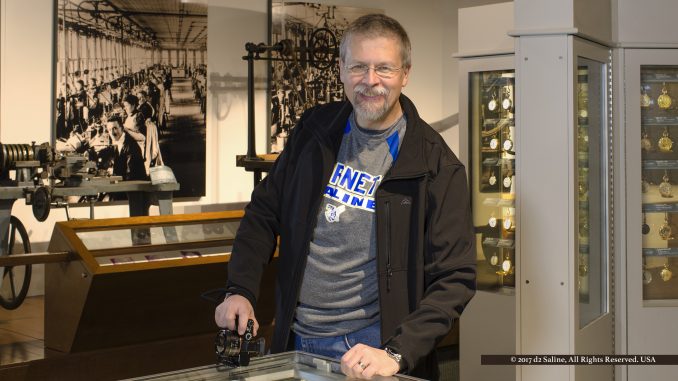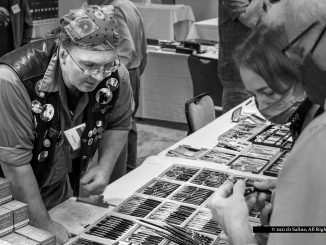
Have you ever wondered how the look and functioning of pocket watches changed during the years they supported the passenger service through Saline Depot Station, starting in 1870? [1]
On September 9, the Saline Area Historical Society kicks off its new season of guest presentations at Saline District Library. Starting at 2:00pm, Saline Journal editor Dell Deaton will show several examples of railroad watches from his personal collection and discuss their significance in terms of that mode of transportation in the late-Nineteenth and early-Twentieth Centuries. No advance registration is requested and there is no cost to attend. [2,3]
Content will begin with an introduction to the surprisingly recent technology milestones in accuracy in personal timekeepers. From there Dell will talk about the “need” for agreement among railroads on standards, define some basic terms used when comparing pocket watches, and lay out the guidelines finally adopted in 1907.
“Rather than run a slide show, my plan is to talk a little bit about actual standard watches applicable to our timeline, beginning with a key-wind “BW Raymond” model from National Watch dated to 1870,” Dell Deaton said. “This was state-of-the-art when those first trains steamed into our station off North Ann Arbor Street. Several of those responsible for operating the equipment here that summer would have been carrying watches very similar if not identical to what I’m going to show.
“The thing that I find surprises people the most is that these watches were as accurate when they were first made as are the finest Swiss luxury watches made today. In fact, they were ultimately held to a higher threshold of accuracy. [5]
“Depending on the number of people who show up, I’ll pass the watches around. All of them work, and very few replacement parts have had to go into them. On the other hand, if we get a light crowd, I’ll open some of them up to show the mechanisms. We’ll also do Q&A.”
Dell Deaton is an internationally recognized expert in horology, both through his long-time affiliation with the National Watch & Clock Museum and his published articles in leading wristwatch publications. In 2010 he began curating exhibits for the Museum. In 2015 his permanent gallery covering the Quartz Revolution and featuring models associated with the James Bond movie of the period. [6,7,8,9,10]
This presentation is expected to run about an hour.
References
- “Saline Depot Museum” Saline Area Historical Society.
- Saline Area Historical Society (home page).
- Saline District Library (home page).
- “Just What Is A Railroad Watch?” Kent Singer (November 2000) National Association of Watch & Clock Collectors (NAWCC).
- “If You Want To Understand The 1870 Saline Railroad Depot Operation, You Need To Understand Its Timekeepers” Dell Deaton (August 21, 2018) Saline Journal.
- “horology” Merriam-Webster.
- National Watch & Clock Museum (home page).
- “Discovered: James Bond’s Rolex” Dell Deaton (February 2009) WatchTime magazine.
- “Four Revolutions – Part I: A Concise History Of The Quartz Revolution” Joe Thompson (October 10, 2017) Hodinkee.
- “James Bond Wore the Quartz Revolution” Dell Deaton (June 1, 2015) Vimeo. https://vimeo.com/129484788




Be the first to comment